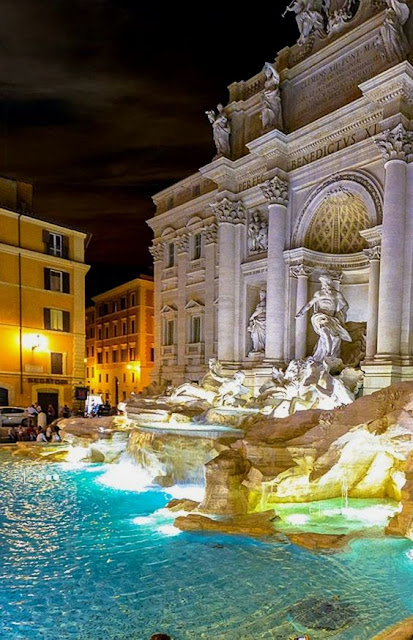The Trevi wellspring is a monumental wellspring that filled in as a presentation of an old Roman reservoir conduit end.
The water passage is the Virgo - Virgin in English - Aqueduct developed by Marcus Vipsanius Agrippa around 19 BC: Agrippa was the child-in-law and the most loved general of Emperor Octavian Augustus. The water passage was 21 km long yet 19 were underground. The water passage was worked by Agrippa to supply the warm showers he worked in the Campus Martius, by the Pantheon. There was a wellspring toward the finish of the water channel officially at that point. The showcase spilling water was situated on the site of the real Church of St. Ignatius.
 |
| Fountains in Rome Italy |
As indicated by Sextons Iulius Frontlines' specific book "De aquaductibus Rome editorials", the water channel takes its name from a virgin woman that the Roman officers met when they were parched and tired. She drives them to a wellspring of water to reestablish. That source was in the Ager Locullanus, the land between the Tibur Tina street and the Collatina street, two of the numerous streets that prompted Rome. That source still today supplies the water passage. In the fourth Century, there were in Rome 1352 wellsprings Notitia dignitatum Imperii Romani.
The reservoir conduit was harmed by the intrusion of the Ostrogoth’s driven by lord Vitigis in 537. After the boorish intrusions, the last segment of the water channel was relinquished and all the medieval rebuilding efforts did not proceed with more remote than the trivium crossing. Beginning from the early Renaissance the popes begin to improve the finish of the water system they reestablished with substantial wellsprings that were luxuriously embellished.
The Roman Empire had a novel and famous association with water, and the Ancient Romans were talented designers who had the capacity to coordinate mind-boggling accomplishments for their time. With cautiously concocted reservoir conduits, water from encompassing slopes streamed to the city on account of the laws of gravity and was thusly put away in storages that made a vitality vacuum, pushing the water to splash out of devoted wellsprings. Rome is well known for its several nasoni, or 'nose-formed' wellsprings with persistently running water, however, these are moderately straightforward in the plan. The cities tip-top regularly exhibit Rome's social artfulness through tasteful methods and the Trevi Fountain to be sure pursues this pattern.
Despite the fact that a wellspring had existed at the area of the Trevi Fountain since old occasions, it wasn't until 1629, Pope Urban VIII appointed Gain Lorenzo Bernini to portray redesigns that the wellspring started to take its present shape. At the point when the pope passed on, the undertaking was surrendered; however, a portion of Bernini's proposals was joined in plans a century later. In 1730 Pope Clement XII held a challenge to re-structure the wellspring, and the Roman-conceived designer Nicola Salvi was eventually granted the undertaking. Work started under Salvi's bearing in 1732 and was finished in 1762 by Giuseppe Panini after Salvi's passing in 1751.
Unpredictably cut out of Travertine stone sourced from close-by Tivoli, the wellspring delineates Oceanus, divine force of water, in the middle specialty, flanked by Abundance and Celebrity. Beneath the divine beings are various hippocampus and tritons adding symmetry to the wellspring. At the highest point of the wellspring sits the Papal Coat of Arms, suspended by holy messengers.















0 comments:
Post a Comment